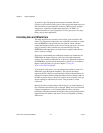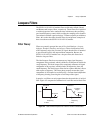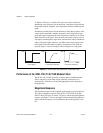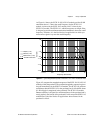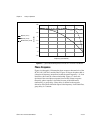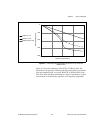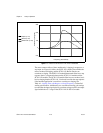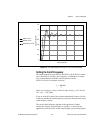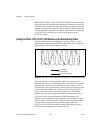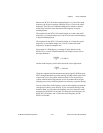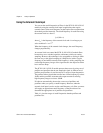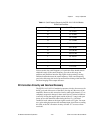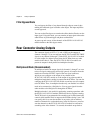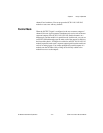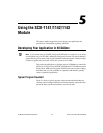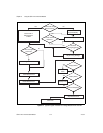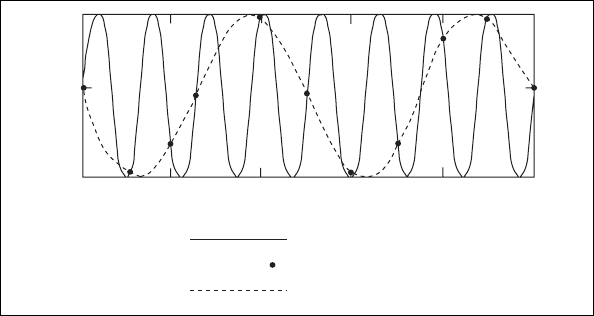
Chapter 4 Theory of Operation
SCXI-1141/1142/1143 User Manual 4-12 ni.com
than the signal frequency range of interest. At frequencies much lower than
the cutoff frequency, passband ripple and phase nonlinearity are much less
noticeable. If you use the filter to prevent aliasing, you must set the cutoff
frequency no higher than one-third of the frequency at which that channel
is being sampled for the SCXI-1141 module, one-twelfth of the frequency
for the SCXI-1142 module, or one-sixth of the frequency for the
SCXI-1143 module.
Using the SCXI-1141/1142/1143 Module as an Antialiasing Filter
Aliasing, a phenomenon of sampled data acquisition systems, causes a
high-frequency signal component to take on the identity of a low-frequency
signal. Figure 4-9 shows an example of aliasing.
Figure 4-9. Aliasing of an Input Signal with a Frequency 0.8 Times the Sample Rate
The solid line depicts a high-frequency signal being sampled at the
indicated points. However, when these points are connected to reconstruct
the waveform, as shown by the dotted line, the signal appears to have a
lower frequency. Any signal frequency with a frequency component greater
than one-half of the sample rate is aliased and incorrectly analyzed as
having a frequency below one-half of the sample rate. This limiting
frequency of one-half the sample rate is known as the Nyquist frequency.
To prevent aliasing, you must remove all signal components with
frequencies greater than the Nyquist frequency before sampling an input
signaled. After an unfiltered signal is sampled and aliasing has occurred,
it is impossible to accurately reconstruct the original signal. The
SCXI-1141/1142/1143 module removes these high-frequency signals
before they reach a DAQ device and cause aliasing.
02 46 810
1
–
1
Sampled Point
Reconstructed Signal
Input Signal



